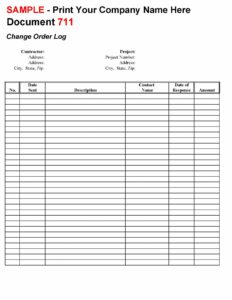Utilizing a structured approach to modifications reduces risks, improves communication among stakeholders, and facilitates efficient implementation. It helps maintain quality, prevent unintended consequences, and provides a clear audit trail for regulatory compliance.
This structured approach is further explored in the following sections, covering the key components of these forms, their practical application, and best practices for implementation.
Key Components of a Change Control Request
Effective management of modifications relies on comprehensive documentation. Essential elements of a standardized form ensure clarity and completeness throughout the process.
1. Identification: A unique identifier distinguishes each request, enabling efficient tracking and retrieval.
2. Description: A concise and unambiguous explanation of the proposed modification details the scope and objectives.
3. Justification: The rationale behind the change, including the problem or opportunity it addresses, provides context and supports decision-making.
4. Impact Assessment: Analysis of potential consequences, both positive and negative, on various aspects of the system or process allows for informed evaluation.
5. Implementation Plan: A detailed outline of the steps involved in executing the change, including timelines, resources, and responsibilities, ensures a structured approach.
6. Backout Plan: A contingency plan for reverting the change in case of unforeseen issues minimizes disruption and mitigates risks.
7. Approval Workflow: Designated stakeholders review and authorize the request, ensuring proper governance and accountability.
These components provide a framework for thorough evaluation and execution, promoting informed decisions and successful outcomes.
How to Create a Change Control Request Template
Developing a standardized form requires careful consideration of key elements to ensure comprehensive documentation and efficient processing. The following steps outline the process:
1. Define Scope and Purpose: Clearly articulate the types of changes the template will cover and its intended use within the organization.
2. Identify Required Fields: Determine the essential information needed to document and assess change requests, including identification, description, justification, impact assessment, implementation plan, backout plan, and approval workflow.
3. Design the Layout: Create a user-friendly format that facilitates easy completion and review, incorporating clear headings, concise instructions, and appropriate data entry fields.
4. Establish Approval Levels: Define the roles and responsibilities for reviewing and authorizing change requests, ensuring appropriate governance and accountability.
5. Develop Supporting Documentation: Provide guidance and instructions for completing the template, including examples and explanations of key fields.
6. Implement and Train: Introduce the template to relevant stakeholders, providing training on its use and emphasizing its importance in the change management process.
7. Review and Refine: Regularly evaluate the effectiveness of the template and make necessary adjustments based on user feedback and evolving organizational needs.
A well-designed template provides a structured framework for managing modifications, contributing to improved communication, risk mitigation, and successful implementation.
Standardized forms provide a crucial mechanism for managing modifications, ensuring consistent documentation, thorough impact assessment, and controlled implementation. Leveraging such a structure minimizes disruption, facilitates communication, and contributes to successful outcomes. Key components, including clear descriptions, justifications, and well-defined approval workflows, ensure transparency and accountability throughout the entire modification lifecycle.
Effective change management requires a proactive and structured approach. Organizations that prioritize the use of well-designed templates enhance operational efficiency, reduce risks, and maintain a higher level of quality and control. Embracing a standardized approach to change control is an investment in stability, resilience, and continuous improvement.

